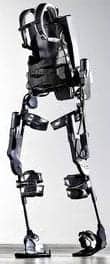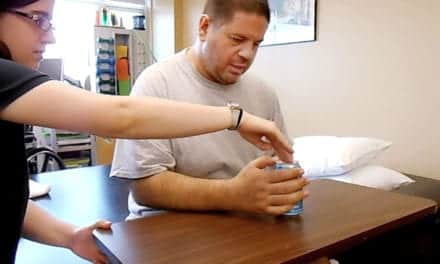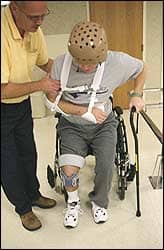 |
The term “weekend warrior” is intended to be neither pejorative nor demeaning. At worst, it is an endearing moniker we ascribe to those who sit at a desk all week, then engage in a sport or heavy physical activity on Saturday or Sunday. Yet while no harm is meant by the term, there is the real possibility that these weekend warriors will cause harm to themselves. The reason is painfully simple: many people jump headfirst into a sport or activity for which they are not physically prepared; in truth, some people do so without being fully prepared for physical action of any kind. And no part of the body is at greater risk for injury or potential damage than the arm, from the shoulder to the wrist and everything in between.
For an example, one need look no further than the ubiquitous softball leagues that spring up each summer, filled with desk jockeys of all shapes and sizes who, every seventh day, will try to play the game like they are the second coming of Babe Ruth. There are other examples as well, of which tennis, golf, and basketball are the major culprits. All of these endeavors put tremendous strain on the shoulder, elbow, wrist, and fingers of even the most finely tuned professional athlete; for the weekend warrior, they represent a virtual Pandora’s box of pain.
Let’s examine the mechanics in each of the aforementioned sports to understand exactly where these arm problems can originate—and how they can be avoided.
THE MECHANICS OF THE GAME
Most people would not categorize golf as a heavily physical activity. Yet the motions involved in playing this game hold the potential for some of the worst and most debilitating injuries, particularly in the elbow and wrist. One of the problems is in how the average weekend golfer approaches the game. After not playing all winter, the excited duffer thinks, “I’d better get over to the driving range.” However, they fail to realize that the driving range is actually more vigorous than a full round of golf.
Let us say that the weekend golfer hits a bucket of 100 balls. They will finish the bucket in about an hour. If the golfer plays 18 holes, it takes approximately 4 hours. Now assume the player shoots around 100. Remove all the putts (assuming two putts on every hole), and the number of swings has been reduced from 100 to about 64. So the full round of golf involves a bit more than 60 strokes, spread out over 4 hours, while the practice range involves 100 hard swings in 1 hour. Clearly, the practice range is not the place to loosen up—it is the perfect place to incur shoulder and wrist injuries, not just from the swings themselves but from the impact of the ball making contact with the club.
Before the weekend golfers hit the range, it makes more sense for them to start swinging irons before woods. Not only are they lighter clubs, players will normally not swing them quite as hard, yet they will still help remove some of the rust from the player’s swing. Some people even start hitting plastic golf balls, which will further reduce arm stress. Once the kinks have been worked out, the golfer is better prepared for the rigors of the practice range; once there, the golfer should try to take more time to finish their swings. Changing club selection frequently ensures that the swing is always slightly different.
Remember, too, that more than just the arm needs to be loose; the whole body has to be ready. If the trunk is not loose, for instance, then the golfer risks overuse of the arm, which will lead to further complications.
Softball is unquestionably an area of concern. The problem is that most players do not loosen up their arm properly, if at all; this is especially troublesome for outfielders, who are required to throw with greater force over longer distances. They often go out to their positions, toss a couple of long balls to their fellow outfielders, then start the game. This is a particularly distressing scenario, particularly when, for example, an outfielder tries to throw out a runner at home from deep center field. Without proper warm-up, the chances of pulling or tearing the rotator cuff increase almost exponentially.
Contrast that with the typical professional ballplayer. Notice how he begins with soft tosses a short distance from his teammate, then slowly moves further away. The idea is to loosen up the arm enough to move to an overhead motion and throw increasingly harder. Because their position is basically all about throwing, pitchers warm up even more methodically. And with few exceptions, they use every one of their allotted eight warm-up pitches before each inning.
Swinging the bat leads to its own set of problems. If the batter is using a bat that is too heavy, the wrist may be incapable of stabilizing the bat at the end of the swing; consequently, the wrist bears enormous stress. And if the wrist is not stable, it can lead to additional strain on other muscles as well.
There is also the act of sliding, which, when done headfirst the way former Cincinnati Reds star Pete Rose used to do it, can lead to broken fingers. If the little finger is broken, it then becomes extremely difficult to hold a bat, as that finger supplies most of the strength for the grip. The aching vibration effect caused by the ball making contact can also cause severe pain to the broken digit.
REPETITIVE MOTION INJURIES
A number of things can happen to parts of the arm in basketball. To begin with, the repetitiveness of lifting the arms over the head can cause shoulder stiffness and tendonitis. One of the most frequent injuries is the “basketball” finger, also known as mallet finger. This injury typically occurs when the ball hits the end of the extended (straight) finger, causing a sudden and forceful flexion (bending) of the distal interphalangeal (DIP) joint (the last joint of the finger). This results in a rupture, or tearing, of the extensor tendon from the bone, followed by pain and swelling at the DIP joint and a bent position with the inability to extend the tip of the finger.1
A mallet finger will not heal without appropriate treatment; in fact, if left untreated, the injury can lead to permanent swelling, deformity, and discomfort, and can cause additional problems in the finger. Other, lesser injuries may occur to the finger, including sprains; it is important that a doctor is consulted as soon as possible to determine the extent of the injury. If it is simply a soft tissue injury, the finger can be taped to the adjacent finger for stabilization. Immobilization, however, is not appropriate for all injuries and can be detrimental for certain injuries because it can lead to unnecessary stiffness.
Tennis is an intriguing combination of softball and golf in terms of the swinging motion: the harsh twisting of the wrist when putting topspin on the ball, the extreme strain on the shoulder from serving, and, of course, the ever-popular tennis elbow. Tennis elbow, also known as lateral epicondylitis, is the common name for a painful condition affecting the outside part of the elbow. Most common in people between 35 and 55 years of age, it can be caused by any repeated twisting movements of the hand, wrist, or forearm. The root of the problem is damage to a tendon that joins the “extensor” muscles of the forearm to the upper arm bone, the humerus. (Tennis elbow occurs on the outside part of the elbow; golfer’s elbow, a similar injury, occurs on the inside part of the elbow, or medial epicondylitis.)2
It should also be noted that in golf, it is not necessary to hit the ball hard to generate distance; it is more about technique. Conversely, tennis does require significant power to generate ball speed. As a result, tennis requires greater arm and shoulder strength. In addition, any time a person holds something like a tennis racket away from the body, arm and shoulder strength is even more critical to maintain stability. What is more, the elbow needs to be stable to generate power. The longer the racket—or softball bat—the more strain is exerted on the shoulder.
The backhand in tennis presents further physical issues. While other sports entail arm movements in one direction, tennis, because of the backhand stroke, requires two. Thus, the potential for injury is effectively doubled. It does depend somewhat on whether the player is using a one- or two-handed backhand; the arm clearly needs to be stronger when using the one-handed version.
PREPAREDNESS
Besides the injuries that occur because the weekend athlete has not properly prepared (ie, stretched and conditioned for the increased activity), their arm is also subject to damage from overuse. Overuse injuries occur when stress is placed on a joint or other tissue, often by “overdoing” an activity or repeating the same activity. Overuse injuries include: inflammation of the sac of fluid that cushions and lubricates the joint area between one bone and another bone, a tendon, or the skin (bursitis); inflammation of the tough, ropelike fibers that connect muscles to bones (tendonitis); hairline cracks in bones (stress fractures), and pressure on nerves (carpal tunnel syndrome, cubital tunnel syndrome). While not all injuries can be prevented, many can in fact be avoided in two ways: stretching and strengthening.3
Engaging in the activity at a slower pace is an effective method of warming up. For example, if a person is going to run, they should start by walking, then gradually increase the pace. This will help loosen muscles and “get the blood going.”
If it is feasible, the person should stop and do some stretches after a few minutes of this warm-up routine. Stretching the legs and arms slowly and continuously—holding the stretch for 30 seconds—is next, then repeating each stretch three or four times. The initial warm-up increases body heat, while the stretching improves the flexibility of the muscles.
If warming up in this systematic fashion is not practical, the weekend warrior should start with some slow stretches, gradually begin the activity, then increase the pace. Then, as the end of the exercise or activity regimen draws near, they should start slowing down the pace again.
While these stretches are somewhat generic, a stretching regimen for each sport can be obtained from a number of sources (ie, tennis or golf pro). The Web is also a good source of information.
Ultimately, strengthening the muscles of the rotator cuff will stabilize the shoulder and provide greater arm strength. With the elbow, there are basically four motions: flexion, extension, supination, and pronation, as well as some rotation. Understanding these movements, and preparing yourself properly to tolerate them, can be instrumental in keeping the weekend warrior in the thick of the battle.
Robin Sklar, OTR/L, CHT, is an occupational therapist and a certified hand therapist. She has been practicing in the Boston area for more than 20 years and works in outpatient clinics in Woburn and Framingham, Mass.
REFERENCES
- Finger injuries in basketball players. Available at: http://www.hughston.com/hha/a_16_4_2.htm. Accessed August 30, 2006.
- Tennis elbow. Available at: http://hcd2.bupa.co.uk/fact_sheets/html/tennis_elbow.html. Accessed August 30, 2006.
- Arm injuries. Available at: http://www.luhs.org/health/kbase/htm/arml/i/th1798.htm. Accessed August 30, 2006.





